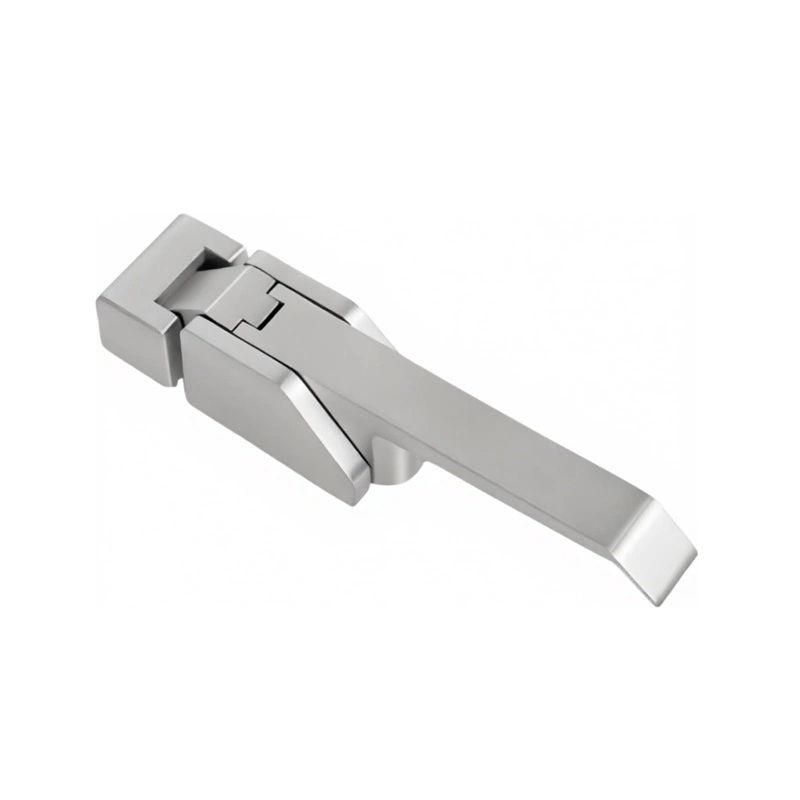The structural stability of industrial cabinet locks is closely related to their ability to withstand external impacts, which directly impacts the safety of the cabinet and its contents. In industrial environments, cabinets may be subject to collisions, prying, and accidental impacts. If the lock structure is not stable, it can easily deform and damage, rendering the cabinet ineffective. Therefore, industrial cabinet locks are designed with an emphasis on structural stability, enhancing their resistance to external impacts through sound mechanical design and the use of high-quality materials. 
Material selection is fundamental to ensuring the structural stability of industrial cabinet locks. High-quality industrial cabinet locks typically utilize high-strength metals for their core components. These materials possess high hardness and toughness, resisting deformation under external impact. Whether it's the lock housing, lock core, or internal transmission mechanism, they all require sufficient strength to prevent breakage or displacement under impact. The rigidity of metal materials ensures a solid overall structure, evenly distributing external forces and minimizing damage caused by localized excessive stress.
The overall structural design of the lock body plays a critical role in its stability. The structural design of industrial cabinet locks fully considers the principles of mechanics, optimizing component connections and stress distribution to enhance overall impact resistance. For example, the connection between the lock body and the cabinet utilizes a multi-point fastening design to increase the strength of the connection and prevent the lock body from separating from the cabinet during impact. The internal transmission mechanism utilizes a precise interlocking design to ensure coordinated load-bearing among all components during load application, reducing the risk of excessive stress at any single point and maintaining structural stability.
The integration of pry-resistant features further enhances the resistance of industrial cabinet locks to external impact. To address potential malicious external forces such as prying, industrial cabinet locks are designed with special pry-resistant components, such as reinforced lock tongues and anti-saw pins. These components increase the load-bearing area or feature specialized shapes to make them more difficult to break. When subjected to prying or other impacts, the pry-resistant structure effectively blocks external forces, protecting the lock cylinder and internal transmission system from damage and maintaining the lock's proper function.
The tightness of the connection between the lock cylinder and the lock body also impacts the structural stability. The lock cylinder and lock body of industrial cabinet locks form a tightly integrated structure, minimizing gaps between them and preventing loosening or displacement of the lock cylinder during impact. This tight connection allows the lock cylinder and lock body to function as a single, force-bearing unit, jointly resisting external shocks and preventing lock failure due to the cylinder falling or misalignment. This tight structural design also reduces wear on internal components caused by impact, extending the lock's service life.
In practical applications, the structural stability of industrial cabinet locks is subject to various external forces. For example, in environments such as factory workshops, cabinets may be accidentally bumped by handling equipment or squeezed by improperly stacked items. In these situations, the stable lock body structure can absorb some of the impact force, protecting the lock from damage. Even under significant external impact, as long as the structure is not completely damaged, the lock will maintain its basic locking function, providing continued protection for the contents within the cabinet.
Structural stability during long-term use is equally important. Frequent opening and closing and prolonged stress on industrial cabinet locks can compromise their structural stability, so the wear resistance of components and the durability of connections are considered during design. By utilizing wear-resistant materials and reinforcing component joints, these locks reduce loosening during long-term use, ensuring the lock maintains excellent stability and resistance to external impacts throughout its service life.
Industrial cabinet locks utilize high-quality materials, a rational structural design, and the incorporation of pry-resistant components to provide a robust structure and strong resistance to external impacts. They can be used reliably in industrial environments, ensuring cabinet security.


